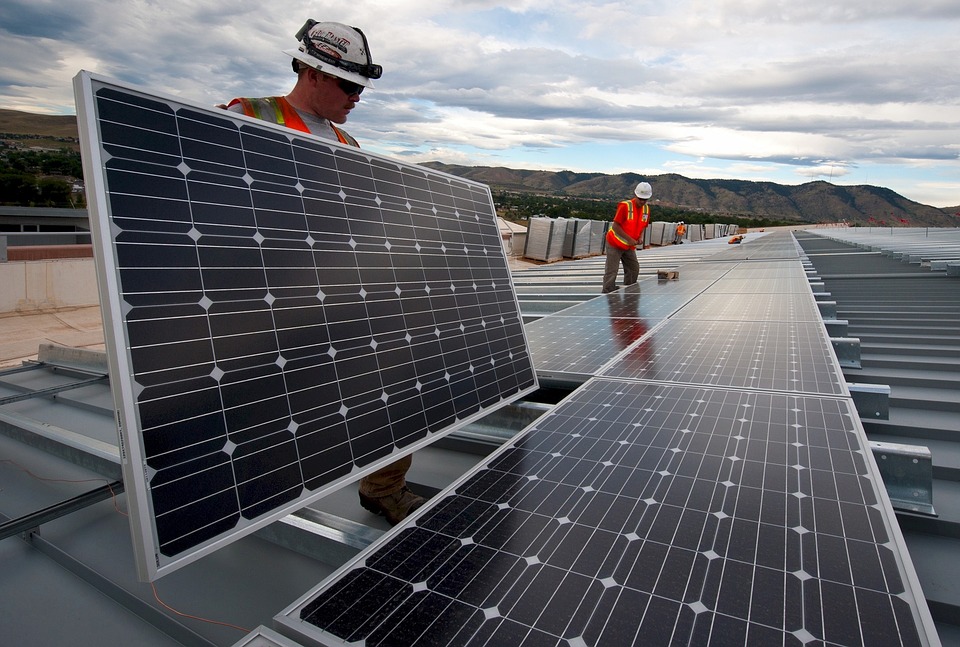As renewable energy sources become more widely available and technologically advanced, so their adoption across the spectrum of industry increases. Being able to claim environmentally friendlier practices has become an important marketing tool, and many consumers, particularly of the younger generations, say they will use information about a business’s green credentials to help them make buying choices and even decide who to work for.
When considering a switch to sustainable energy sources, manufacturers and other businesses have to factor in the cost implications, but in doing so, it’s important to take into account the positive effect of good publicity, and the potential to reduce energy consumption costs for the business. Not to mention of course the small matter of corporate responsibility and the effect of manufacturing on energy consumption and the environmental impacts. An added benefit is that adopting renewables adds an element of future-proofing to your business. This is particularly relevant at a time when fossil fuel energy sources are potentially subject to distribution problems where they are affected by political intervention.
Cost implications
There is no question that implementing a system of sustainable or alternative source of energy is a costly undertaking that will require a substantial investment. However, there are federal tax incentives and credit systems for businesses that can help with investment costs, and depending on where you are located, there may be local incentive schemes available as well. These schemes can not only lower the investment itself but will accelerate your rate of return. For a business adopting its own energy generation system, typical returns would see the initial investment cost being recouped after three to six years. Compare this to the current average lifespan of a high-quality renewable energy source system of around thirty years, and it’s clear that the initial investment is well worth making. When considering the costs of renewable energy, businesses need to take into account the longer-term savings, plus the advantages of having a reduced dependency on fossil fuel price rises.
Sources of investment
Many businesses are unable or unwilling to commit the investment from their own funds, but there are low-interest loan options available to some businesses who wish to adopt renewable energy systems. These types of loans are designed to encourage companies to move to renewable energies such as solar power and have made an impact on the ability, particularly of smaller manufacturers, to be able to afford the initial investment. PACE (Property Assessed Clean Energy) financing is also expanding at an increasing rate across the United States. PACE enables property owners to pay back the investment in solar energy systems through property taxes. This alleviates the burden of taking on extra debt and can be worth considering for anyone who is eligible.
Solar, wind, or biomass?
The selection of the most appropriate form of renewable energy will depend to some extent on the physical attributes of the business. For example, you would need to be in an open, unrestricted area like the countryside or coast to get the best out of a wind turbine system. Biomass systems are dependent on there being sufficient materials to feed them, and are more prone to objections from local residents. Solar is one of the most reliable and easily installed options, providing you have sufficient space for the number of panels you would require. Rooves are frequently used and need to be sufficiently capable of bearing the weight of the solar array to be suitable, but there could be other options for siting the panels. You need to get an expert appraisal from a solar engineer, who you can find by doing an internet search for “solar providers near me.” If your business lacks any suitable facility for the siting of renewable energy systems, there are energy providers who can offer plans that guarantee to only use energy from renewable sources. This could be the best option for a business that can’t take on its own renewable system.
Related technologies impacting manufacturing
There are other ways that manufacturers can improve their sustainability credentials in addition to the adoption of renewable energy systems. For example, motion activated lighting ensures that the power is on only when workers are present. No more lights left on all night, and reduced energy bills that will cover the initial investment. LED lighting and tube lighting that utilises reflected sunlight are both more energy efficient than traditional lighting systems. Radiant heat flooring will reduce heating bills, although the installation may not always be easy depending on your building’s construction. There is also the question of the machinery that is used in the manufacturing process. Replacing production equipment before it has completed its expected lifecycle is an investment that many companies would find hard to justify. However, it is worth calculating what the savings would be for efficient new machines compared to your current ones, to see if the cost of replacement could be recouped within a reasonable time period. When it is time to replace machinery, energy saving is now a more frequently found attribute for modern models.
The manufacturing industry is a key contributor to energy use, and therefore any measures that can be taken to reduce the impact of manufacturing on the environment need to be embraced. Manufacturers have a responsibility to contribute towards a reduction in carbon emissions, and the adoption of renewable energy sources is proving to be an effective method of achieving this aim. The investment costs shouldn’t be seen as an insurmountable barrier to modernisation in manufacturing, and with the aforementioned finance schemes available to businesses the help that many business owners need is available. When the prospective return on an investment in renewable energy is calculated, the figures should reassure the most careful of business owners. Being in control of your own energy source is going to be a very definite advantage in the future, with the volatile state of fossil fuel industries and supply chains across the world. Embracing renewables is a positive step for manufacturing and one which business owners would be well advised to prioritise.












Add Comment